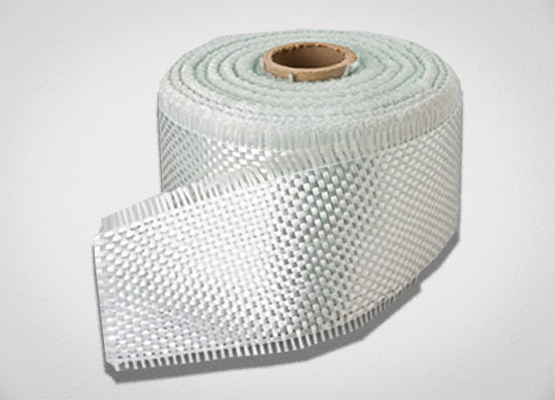Product Introduction
Fiber reinforcements
Composites usually consist of a matrix to hold the reinforcing materials. Reinforcing materials are the most important factors to grant strength to a composite system and have different shapes. These materials are able to conduct heat and resist against chemicals. The applications of these materials are also very diverse and range from the manufacture of computer parts to tennis rackets and chemical storage tanks.
Fibers are the main component of fiber-reinforced composite materials. They occupy a significant volume of composite and bear a large portion of the load on the composite structure. The amount, type and alignment of fibers are important factors that can affect the following properties: 1) Specific gravity 2) Tensile strength and modulus 3) Compressive strength and modulus 4) Fatigue strength and failure mechanism 5) Heat and electrical transfer coefficients 6) Price
The reinforcing phase in the composite can be in the form of fibers and particles that can also act as fillers. The fibers can be mineral (glass fibers, carbon fibers, etc.), organic (Kevlar, polyamide, etc.), metallic (boron, aluminum, etc.), or natural.
Due to the wide range of applications of glass fibers, these fibers are discussed below. Glass fibers prepare in a variety of shapes and types, such as continuous or parallel strands, short chopped fibers, or woven coils. These fibers are produced by passing molten glass through a platinum crucible with very small holes. Immediately after the glass filaments leave the crucible, they are quickly cooled by blowing moist air whose temperature and humidity is controlled, as well as by spraying water, and then wrapped in different size and thickness on cylinders for later use.
Glass fiber is the most common and widely used fiber in the composite industry. They are divided into different types according to the type and composition of materials used in their preparation. The main constituent of glass fibers, like ordinary glass (Soda-lime glass), is silica (SiO2). Other oxides such as B2O3 and Al2O3 are added to modify the structure of the SiO2 network as well as to optimize the manufacturing process such as lowering the melting temperature.

The structure of glass fiber is a three-dimensional network of silicon, oxygen, and other atoms that are irregularly gathered together. Therefore, glass fibers have an amorphous structure, which is non-crystalline and isotropic. In isotropic materials the mechanical properties is the same in all directions.

a) Basic unit of SiO2, b) combination of two units and c) 3-D network of random SiO2
Main advantages of glass fibers
- Low price
- High tensile strength
- High chemical resistance
- Excellent insulation properties
It should be noted that these fibers show low tensile modulus, relatively high specific gravity, sensitivity to abrasion during transport (which often reduces tensile strength), low fatigue strength and high hardness which causes wear of molds and cutting tools.
Different types of glass fibers and their advantages
Glass fibers are classified as A, C, D, E, M and S.
The letter A refers to soda-lime glass and is derived from the word Alkali and is the ordinary glass that was common in the past which has poor thermal and chemical properties and is not suitable for the production of reinforcing fibers. The most common usage of this type of material is for making bottles, glass plates and soda glasses.
The letter C is derived from the word Chemical and is a fiber that has a very high chemical resistance.
The letter D is derived from the word Dielectric and is the fiber with the lowest dielectric constant. The lower the dielectric constant, the more transparent the substance is against electromagnetic waves. Therefore, these fibers are used in the construction of radar shields to protect the radar from atmospheric factors and pass the waves without dropping.
The letter E is derived from the word Electrical. These fibers show good electrical insulation properties. More than 90% of the glass fibers used in the composite industry are of this type. One of the most important capabilities of these fibers is its very high resistance to water, which is especially effective in the manufacture of composites used in humid environments.
The letter M is derived from the word Modulus and are fibers that have a high modulus.
The letter S refers to High Strength. The strength and price of this type of fiber is 20% and 4 times higher than type E, respectively. In addition, these fibers possess good tensile strength at high temperatures with significant resistance to wear. One of the most important applications of these fibers is in the aircraft parts as the engine shell of reactors and wherever there is a need for high efficiency.
The letter Z refers to fiber containing Zirconia and is a glass with excellent resistance to alkalis.

A noteworthy point about strands consisting of low-diameter fibers is that in the brittle fracture due to the growth of cracks, which can be due to the presence of fine cracks or surface flaws on the surface, only individual fibers are broken and the complete failure of the fibers is prevented. Therefore, a strand of fiber has a higher fracture strength than a fiber with a similar overall diameter. Because in a thick fiber the growth of a crack due to surface defects leads to its complete failure.

Affecting Factors on the strength of glass fibers
Studies show that the properties of glass fibers, in addition to the materials used in their structure, also depend on other factors such as environmental conditions. Other factors include the following.
A) Speed of loading: The strength of glass fibers increases with the speed of tension applied during the tensile test.
B) Temperature: The strength of glass fibers decreases with increasing temperature. For example, an increase in temperature from 20 to 100 °C is resulted in a 30% decrease in strength.
C) Moisture: The strength of glass fibers decreases with increasing humidity.
D) The ratio of the reinforcing phase to the matrix phase can have many effects on the properties of the composite. For example, tensile strength increases with increasing percentage of glass fibers, while elongation decreases. Therefore, an optimal limit is selected to obtain the desired characteristics.
Application of glass fibers
Electronics: GRP has been widely used to produce circuit boards (PCBs), televisions, radios, computers, cell phones, electric motor covers, etc.
Home & Furniture: Roofing sheets, bathtub equipment, windows, awnings, shelves, tea tables, hot tubs, etc.
Aviation and Aerospace: GRP has been widely used in aerospace, although it is not widely used to build the original aircraft framework, as alternative materials exist that are more appropriate. Typical applications of GRP are engine covers, luggage racks, toolboxes, caps, channels, storage buckets and antenna shields. It is also widely used in land shipment equipment.
Boat construction and marine applications: This material is ideally suited for boat construction. Although there have been problems with water absorption in the past, modern resins are more durable and are used to make simple boats. In fact, GRP weighs less than other materials such as wood and metals.
Medicine: GRP is widely suitable for medical applications due to its low porosity, non-staining and high wear resistance. From containers to X-ray boards (where X-ray transparency is important) it consists of GRP.
Car: GRP has been widely used in the production of auto parts such as body panels, seat covers, door panels, bumpers and engine covers. It can be said that GRP is generally used to replace metal and non-metal parts in various applications and its processing costs are relatively low compared to metals.


